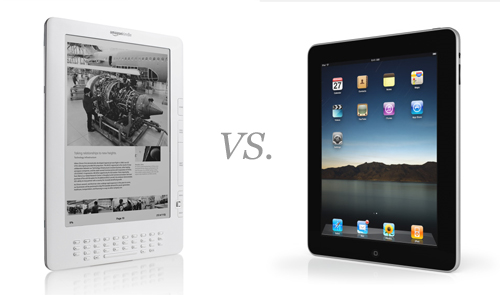Why the Apple iPad won't cannibalize the Kindle e-reader

Is the next-generation e-book reader dead on arrival thanks to the Apple iPad and its coming slate tablet PC siblings?
According to Freescale Semiconductor, not at all.
Freescale has 90 percent market share in selling application processors. I spoke with consumer marketing director Glen Burchers to discuss why the iPad won't kill off the Kindle.
ZDNet: The world has met Apple's iPad. What will happen to e-readers?
We believe that market is going to continue to grow. For the average e-reader customer, leisure reading is the primary leisure activity -- before TV, before the Internet.
The average e-reader customer is 47 years old, makes $75,000 a year and reads two books per month.
But the tablet market consumer is much different: their primary function is web surfing. The typical web user is younger -- student age, and not into leisure reading.
The average American teen is online 35 hours per week. They're on their phone 30 minutes per day. They need a bigger screen device.
ZDNet: If I understand you correctly, you're saying that older folks will choose e-readers over tablet PCs for their simplicity.
In the middle of last year, our research focus shifted from the clamshell to the tablet. The iPad is great at web browsing, e-mail and media playback. The e-reader's main inhibitor? Price. The breaking point is $99.
But that's very difficult to achieve. But if you lower the price from $249 to $199, the amount of prospective buyers double. If you lower it from $199 to $149, it doubles again.
The potential market in the U.S. for people for whom leisure reading is No. 1, that's just under 10 percent of the population, or 20 million people in North America. About 3 million units have been shipped in North America thus far.
ZDNet: What's the price proposition? Both the Kindle and the iPad are fairly expensive.
So we asked ourselves, how can we bring the price down?
Today, all e-readers use ARM 11. The new generation, Cortex A8, is more than twice as fast. That shows up in the performance of the device -- the screen refresh.
The Kindle takes two seconds to refresh. The Nook takes three seconds. With the next-generation of e-Ink, plus fast decoding on the processor, we'll get page turns down to 0.5 seconds, which approaches the physical limits of the e-ink technology.
None of the chips in e-readers right now use chips built especially for them. This new generation is the first to do so.
Cost savings also comes in other ways. For example, using LPDDR2 instead of mobile DDR memory.
With everything, we managed to take off $15 to the bill of material savings. That's a $30 retail impact.
ZDNet: And that's enough of a price difference to get more leisure readers to bite.
I'm very bullish on this market. Our forecasts are for 2.5 to three times volume growth.
Kindle sales worldwide are a big help to this growth figure. Europe has similar reading habits to U.S., Also, we think that China could possibly have those habits, too.
Leisure readers don't want a complicated device. Both could exist and not cannibalize each other.
